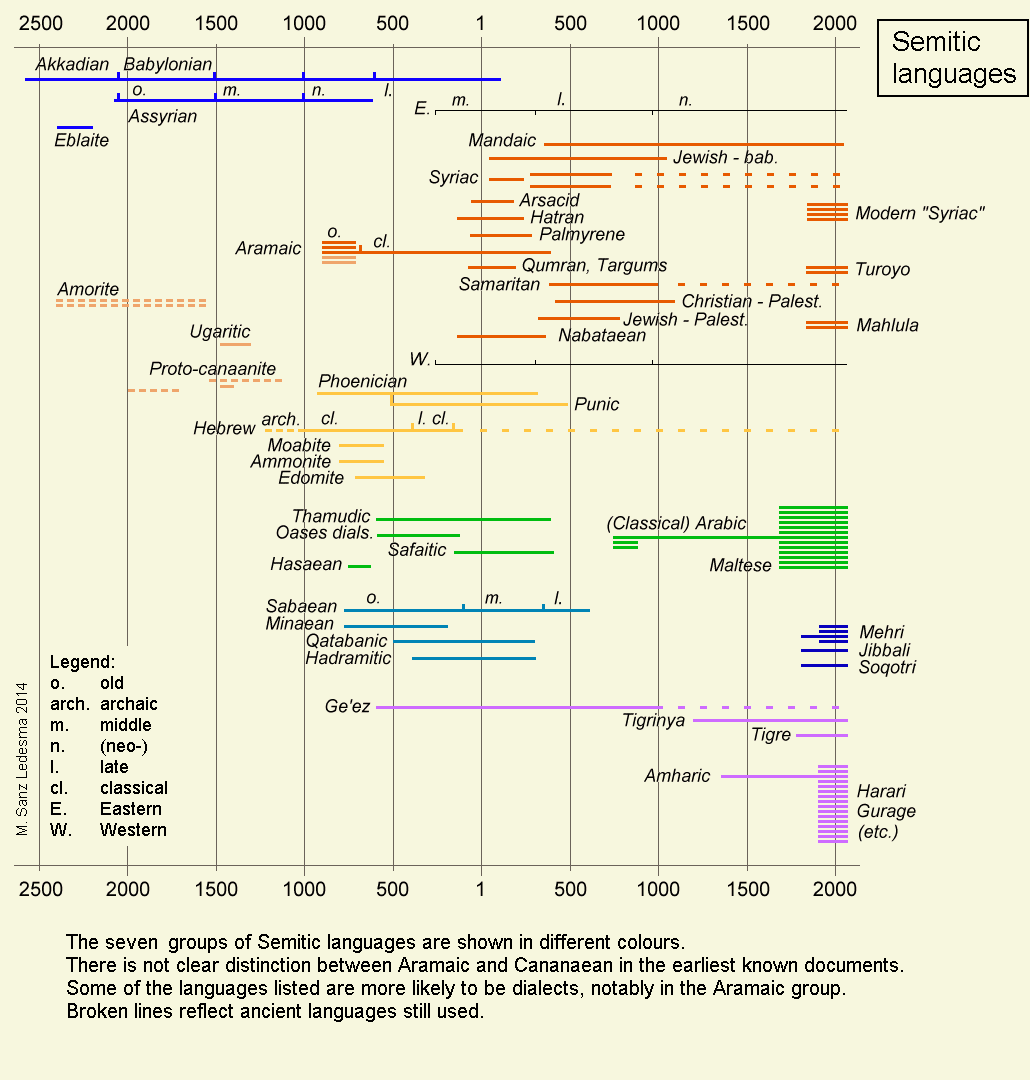Semitic Language
A Semitic Language is an Afroasiatic Languages that ...
- AKA: Semitic_languages.
- Context:
- It can range from being an East Semitic Language to being a Central Semitic Language to being a Southern Semitic Language.
- …
- Example(s):
- See: K-T-B, Western Asia, North Africa, Horn of Africa, West Africa, Malta, Afroasiatic Languages, Arabic, Second Language.
References
2022
- (Wikipedia, 2022) ⇒ https://en.wikipedia.org/wiki/Semitic_languages Retrieved:2022-10-4.
- The Semitic languages are a branch of the Afroasiatic language family. They are spoken by more than 330 million people across much of West Asia,{{Malta, West Africa, and in large immigrant and expatriate communities in North America, Europe, and Australasia. The terminology was first used in the 1780s by members of the Göttingen school of history, who derived the name from Shem, one of the three sons of Noah in the Book of Genesis.
Semitic languages occur in written form from a very early historical date in West Asia, with East Semitic Akkadian and Eblaite texts (written in a script adapted from Sumerian cuneiform) appearing from the 30th century BCE and the 25th century BCE in Mesopotamia and the north eastern Levant respectively. The only earlier attested languages are Sumerian and Elamite (2800 BCE to 550 BCE), both language isolates, and Egyptian (a sister branch of the Afroasiatic family, related to the Semitic languages but not part of them). Amorite appeared in Mesopotamia and the northern Levant circa 2000 BC, followed by the mutually intelligible Canaanite languages (including Hebrew, Phoenician, Moabite, Edomite and Ammonite, and perhaps Ekronite, Amalekite and Sutean), the still spoken Aramaic, and Ugaritic during the 2nd millennium BC.
Most scripts used to write Semitic languages are abjadsa type of alphabetic script that omits some or all of the vowels, which is feasible for these languages because the consonants are the primary carriers of meaning in the Semitic languages. These include the Ugaritic, Phoenician, Aramaic, Hebrew, Syriac, Arabic, and ancient South Arabian alphabets. The Geʽez script, used for writing the Semitic languages of Ethiopia and Eritrea, is technically an abugidaa modified abjad in which vowels are notated using diacritic marks added to the consonants at all times, in contrast with other Semitic languages which indicate diacritics based on need or for introductory purposes. Maltese is the only Semitic language written in the Latin script and the only Semitic language to be an official language of the European Union.
The Semitic languages are notable for their nonconcatenative morphology. That is, word roots are not themselves syllables or words, but instead are isolated sets of consonants (usually three, making a so-called triliteral root). Words are composed out of roots not so much by adding prefixes or suffixes, but rather by filling in the vowels between the root consonants (although prefixes and suffixes are often added as well). For example, in Arabic, the root meaning "write" has the form k-t-b. From this root, words are formed by filling in the vowels and sometimes adding additional consonants, e.g. كتاب kitāb "book", كتب kutub "books", كاتب kātib "writer", كتّاب kuttāb "writers", كتب kataba "he wrote", يكتب yaktubu "he writes", etc.


- The Semitic languages are a branch of the Afroasiatic language family. They are spoken by more than 330 million people across much of West Asia,{{Malta, West Africa, and in large immigrant and expatriate communities in North America, Europe, and Australasia. The terminology was first used in the 1780s by members of the Göttingen school of history, who derived the name from Shem, one of the three sons of Noah in the Book of Genesis.